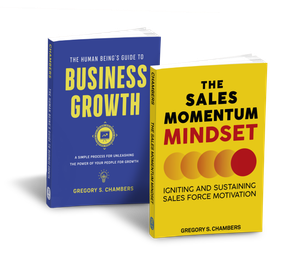Revisiting 4 More Ways to Measure a Project's ROI
"What's the ROI?"

It's time to bring up one of my past posts. It's all about helping a client calculate the Return On Investment of a project.
How do you know when this question needs addressing? It sound like this:
"What's the ROI?"
(it's not rocket science. . . though I like to pretend. . .)
Ultimately, we're answering the question "Why bother?" And that's a great exercise because before we jump into anything, we should come up with the best case and worst case scenarios post-engagement.
The main point I will touch on here is that when you walk through your ROI calculation, know that your investment is more than money so your return will show up in more places than just top line or improvements to the bottom line.
I want you to consider these points next time you calculate a spend in Business Development. Time, trust, testing and turnover.
- Quick note - Before I jump into these, you can't measure ROI on things you aren't measuring. If you have no measure in place for time, trust, testing or turnover, start there. What I'm about to riff on will only help if you attempt to measure these inputs up front.
With that said, let's get into the other areas that will provide a return on your project.
Time
There is power in a focused effort. As an example, while at a previous employer I watched an entire division turn around because an extremely effective manager was so skilled at getting everyone to focus on "one thing". When you're determining ROI on a project, take into account the results that come from focused effort and what happens to on your team's effort when they have competing tasks to be done.
Where does time show up? Outside of the physical act of doing an activity consider the mental aspect of having a task that should be done. I call it the weight of all those bits and bytes. "I want to get that book written, but I just don't have time," is the kind of mental weight I'm talking about. The ROI shows up in job effectiveness.
Trust
This may seem equally esoteric but in any project there are a couple of places where trust shows up. Trust from your customers and trust from your employees. I hear customer trust expressed most often as "customer advocacy" or "customer engagement" and the trust of your employees is filed under "morale". I'm not surprised when I hear that my clients are measuring customer engagement in ROI, but when I hear about companies measuring their employee's state of mind, I fall out of my chair.
In case your company isn't formally measuring Morale, I suggest sticking to my motto, "start anywhere, go everywhere" and starting with a simple employee survey pre-project to be used as a baseline. Repeating the survey mid-engagement and post engagement will give you enough data points to start with. I know it's far from ideal but it will give you some insights and points of discussion.
Testing
A sales and marketing project generally improves your organization's R&D efforts. Especially if you take the time to figure out where you expect the pivot to take place and have results in mind before you begin.
How does this happen? Whenever you go after gains from new prospects or deepen the relationship with existing customers, you will receive new feedback on the old ways of doing business. Keep your R&D team in the loop and you'll find beta testers galore. If you have people focused on the future versions of anything, a business development project will cut development time. Nice.
Turnover
Employee turnover is directly tied to morale, but I suggest looking at it as a separate measurement. Your employees need to understand the hows and whys behind any project designed to help customers. Then you need to communicate to them where they fit into that effort.
Why? Because there's ample evidence that when your employees feel like they are part of something bigger, they report higher levels of job satisfaction. They stay with you. Turnover is reduced and you can track it because your HR department is doing that exercise already.
The next business development project that comes around will be the perfect time to give one of these new measures a whirl. As always, contact me for further details on any of these four "Ts".
Good stuff.
About the Author: Greg Chambers is Chambers Pivot Industries. Get more business development ideas from Greg on Twitter.




